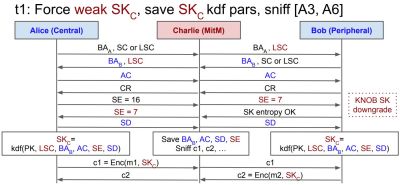They’re back! The San Francisco autonomous vehicle hijinks, that is, as Waymo’s fleet of driverless cars recently took up the fun new hobby of honking their horns in the wee hours of the morning. Meat-based neighbors of a Waymo parking lot in the South Market neighborhood took offense at the fleet of autonomous vehicles sounding off at 4:00 AM as they shuffled themselves around in the parking lot in a slow-motion ballet of undetermined purpose. The horn-honking is apparently by design, as the cars are programmed to tootle their horn trumpets melodiously if they detect another vehicle backing up into them. That’s understandable; we’ve tootled ourselves under these conditions, with vigor, even. But when the parking lot is full of cars that (presumably) can’t hear the honking and (also presumably) know where the other driverless vehicles are as well as their intent, what’s the point? Luckily, Waymo is on the case, as they issued a fix to keep the peace. Unfortunately, it sounds like the fix is just to geofence the lot and inhibit honking there, which seems like just a band-aid to us.
vulnerability46 Articles
Update On The BLUFFS Bluetooth Vulnerability
As we first reported in yesterday’s weekly security post, researchers at EURECOM have revealed the details (PDF, references) of a new man-in-the-middle (MITM) attack on Bluetooth 4.2 through 5.4, which has been assigned CVE-2023-24023. Like preceding CVEs, it concerns the session authentication between Bluetooth devices, where the attacker uses spoofed paired or bonded devices to force the use of a much shorter encryption key length.
 The name of this newly discovered vulnerability is BLUFFS (Bluetooth Forward and Future Secrecy), where forward and future secrecy are important terms that refer to the protection of secure sessions against compromise in the past (forward, FoS) and future (FuS). The CVE presentation notes that the Bluetooth specification does not cover either FuS or FoS. In total two new architectural vulnerabilities were discovered, both of which attack the security key.
The name of this newly discovered vulnerability is BLUFFS (Bluetooth Forward and Future Secrecy), where forward and future secrecy are important terms that refer to the protection of secure sessions against compromise in the past (forward, FoS) and future (FuS). The CVE presentation notes that the Bluetooth specification does not cover either FuS or FoS. In total two new architectural vulnerabilities were discovered, both of which attack the security key.
The Bluetooth SIG has released a statement regarding this attack method. Although serious, it would seem that the core issue is that some implementations allow for encryption key lengths below 7 octets:
Continue reading “Update On The BLUFFS Bluetooth Vulnerability”
Serious Vulnerability In European Trunked Radio System
Trunked radio systems can be difficult to wrap one’s mind around, and that’s partially by design. They’re typically used by organizations like police, firefighters, and EMS to share a limited radio frequency band with a much larger number of users than would otherwise be able to operate. From a security standpoint, it also limits the effectiveness of scanners who might not know the control methods the trunked systems are using. But now a global standard for encrypted trunked radio systems, known as TETRA, has recently been found to have major security vulnerabilities, which could result in a lot more headache than disrupted voice communications.
One of the vulnerabilities in this radio system was a known backdoor, which seems to have been protected largely via a “security through obscurity” method. Since the system has been around for about 25 years now, it was only a matter of time before this became public knowledge. The backdoor could allow non-authorized users to snoop on encrypted radio traffic. A second serious vulnerability, unrelated to this backdoor, would further allow listening to encrypted voice traffic. There are a few other minor vulnerabilities recently uncovered by the same security researchers who found these two major ones, and the current recommendation is for anyone using a TETRA system to take a look to see if they are impacted by any of these issues.
Part of the reason this issue is so concerning is that these systems aren’t just used for encrypted voice among first responders. They also are used for critical infrastructure like power grids, rail networks, and other systems controlled by SCADA. This article from Wired goes into much more detail about this vulnerability as well, and we all know that most of our infrastructure already needs significant help when it comes to vulnerabilities to all kinds of failure modes.
Thanks to [cfacer] and [ToniSoft] who sent these tips!
Photo via Wikimedia Commons.
Remote Code Execution On An Oscilloscope
There are a huge number of products available in the modern world that come with network connectivity now, when perhaps they might be better off with out it. Kitchen appliances like refrigerators are the classic example, but things like lightbulbs, toys, thermostats, and door locks can all be found with some sort of Internet connectivity. Perhaps for the worse, too, if the security of these devices isn’t taken seriously, as they can all be vectors for attacks. Even things like this Rigol oscilloscope and its companion web app can be targets.
The vulnerability for this oscilloscope starts with an analysis of the firmware, which includes the web control application. To prevent potentially bricking a real oscilloscope, this firmware was emulated using QEMU. The vulnerability exists in the part of the code which involves changing the password, where an attacker can bypass authentication by injecting commands into the password fields. In the end, the only thing that needs to be done to gain arbitrary code execution on the oscilloscope is to issue a curl command directed at the oscilloscope.
In the end, [Maunel] suggests not connecting this oscilloscope to the Internet at all. He has informed the producer about it but as of this writing there has not been a resolution. It does, however, demonstrate the vulnerabilities that can be present in network-connected devices where the developers of the software haven’t gone to the lengths required to properly secure them for use with the modern Internet. Even things not connected to a traditional Internet connection can be targets for attacks.
Exploring The Anatomy Of A Linux Kernel Exploit
A lot of talk and discussion happens anytime a hardware manufacturer releases a new line of faster, more powerful, or more efficient computers. It’s easy to see better and better specifications and assume that’s where all the progress is made. But without improved software and algorithms, often the full potential of the hardware can’t be realized. That’s the reason for the creation of io_uring, an improved system call interface in the Linux kernel. It’s also where [chompie] went to look for exploits.
The reason for looking here, in a part of the kernel [chompie] had only recently learned about, was twofold. First, because it’s a place where user space applications interact with the kernel, and second because it’s relatively new and that means more opportunities to find bugs. The exploit involves taking advantage of a complicated asynchronous buffer system, specifically at a location where the code confuses a memory location being used by the kernel with one which is supposed to be used for user space.
To actually get this to work as an exploit, though, a much more involved process is needed to make sure the manipulation of these memory addresses results in something actually useful, but it is eventually used to gain local privilege escalation. More about it can be found in this bug report as well. Thanks to the fact that Linux is open-source, this bug can quickly be fixed and the patch rolled out to prevent malicious attackers from exploiting it. Open-source software has plenty of other benefits besides being inherently more secure, though.
Prompt Injection: An AI-Targeted Attack
For a brief window of time in the mid-2010s, a fairly common joke was to send voice commands to Alexa or other assistant devices over video. Late-night hosts and others would purposefully attempt to activate voice assistants like these en masse and get them to do ridiculous things. This isn’t quite as common of a gag anymore and was relatively harmless unless the voice assistant was set up to do something like automatically place Amazon orders, but now that much more powerful AI tools are coming online we’re seeing that joke taken to its logical conclusion: prompt-injection attacks. Continue reading “Prompt Injection: An AI-Targeted Attack”
Arbitrary Code Execution Over Radio
Computers connected to networks are constantly threatened by attackers who seek to exploit vulnerabilities wherever they can find them. This risk is particularly high for machines connected to the Internet, but any network connection can be susceptible to attacks. As highlighted by security researcher and consultant [Rick Osgood], even computers connected to nothing more than a radio can be vulnerable to attacks if they’re using certain digital modes of communication.
The vulnerability that [Rick] found involves exploiting a flaw in a piece of software called WinAPRS. APRS is a method commonly used in the amateur radio community for sending data over radio, and WinAPRS allows for this functionality on a PC. He specifically sought out this program for vulnerabilities since it is closed-source and hasn’t been updated since 2013. After some analysis, he found a memory bug which was used to manipulate the Extended Instruction Pointer (EIP) register which stores the memory address of the next instruction to be executed by the CPU. This essentially allows for arbitrary code execution on a remote machine via radio.
The exploit was found while using Windows XP because it lacks some of the more modern memory protection features of modern operating systems, but the exploit does still work with Windows 10, just not as reliably and with a bit of extra effort required. It’s a good reminder to use open-source software when possible so issues like these can get resolved, and to regularly install security updates when possible. If you’re looking to delve into the world of APRS in more modern times, take a look at this project which adds APRS to budget transceivers. Just make sure you get your license first.


















